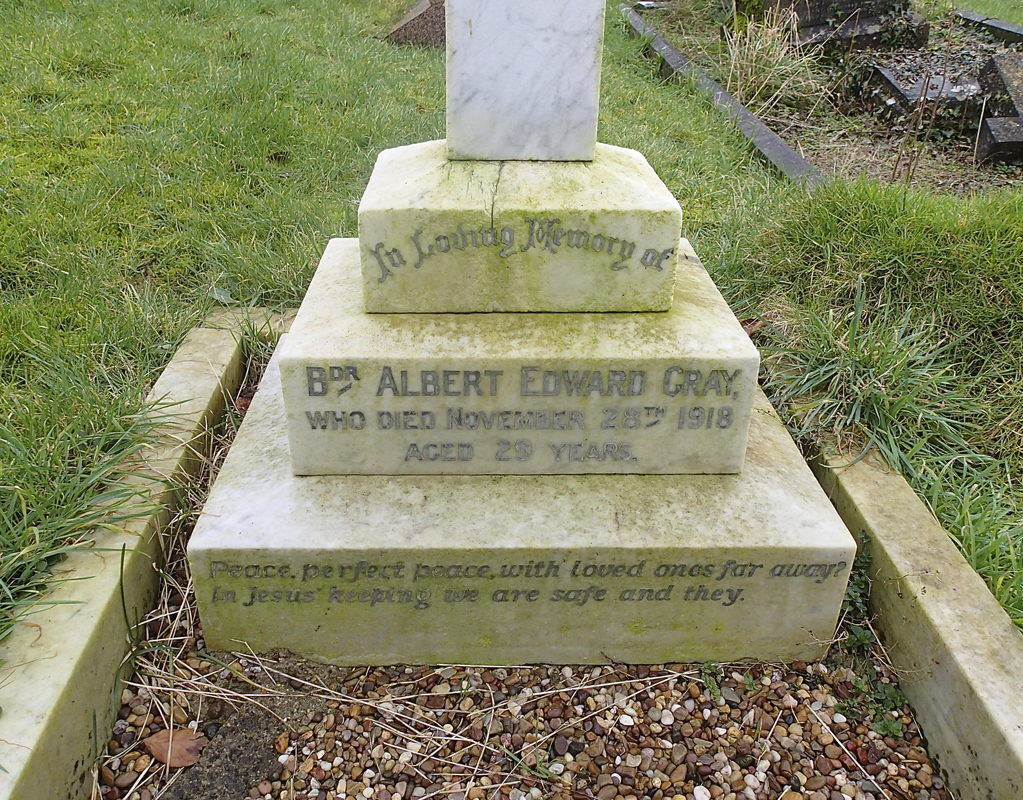Albert Edward Gray
View Albert Edward on the Commonwealth War Graves Commission website
Known information
Albert Gray died in the great 'flu epidemic three weeks after the First World War ended. He was born in Ridlington, the youngest son of George and Elizabeth Gray and was the husband of Mabel Gray. The couple had a young son, George, who was born in 1917. In the 1911 census he was working as a footman. According to information on display inside Ridlington Church he also spent time working as a nurse at Rampton Mental Hospital in Nottinghamshire. Albert gave his occupation as a caretaker and gardener when he enlisted on 11 December 1915 when he was living at Knaith, near Gainsborough in Lincolnshire. He appears not to have been posted abroad, serving first in Uckfield in Sussex and then in Scotland with the Royal Garrison Artillery on Inchkeith Island, defending the approaches to the great naval base in the Firth of Forth. Albert was admitted to 2nd Scots General Hospital on 25 November 1918 seriously ill with 'flu and died three days later aged 29. A telegram was sent to his widow, telling her he died at 6.50pm on 28 November 1918, just three weeks after the end of the war. His body was brought back to Ridlington and he was buried in the churchyard. Later, Mabel received two parcels containing his possessions including a tobacco pouch and hair comb. Albert's elder brother John Christopher Gray died two weeks before him, we assume also from the 'flu epidemic which swept through Europe at the end of the First World War. The Commonwealth War Graves Commission gives Albert's date of death as 29 November.

|
Do you know something about Albert Edward that hasn't been mentioned? You can add any new information and images as a contribution at the bottom of this page. |











.png)


.jpg)





Please wait